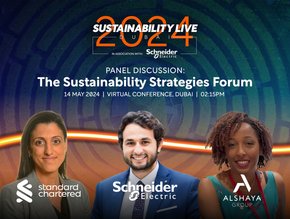EY: Driving climate reporting in financial services

Businesses will soon need to adopt new ESG guidelines, frameworks and regulations, to help investors, consumers and stakeholders assess their sustainability. These include:
- Corporate Sustainability Reporting Directive (CSRD)
- International Sustainability Standards Board (ISSB),
- Sustainable Finance Disclosure Regulation (SFDR)
- UK Transition Plan Taskforce (UK TPT)
- The Securities and Exchange Commission (SEC)
- European Sustainability Reporting Standards (ESRS)
- Global Reporting Initiative (GRI)
- Task Force on Climate-related Financial Disclosures (TCFD)
Some of these standards have been around for years, whereas others are new; some are mandatory for businesses to follow, while others are voluntary.
The six key areas of ESG reporting
Businesses need to be fully prepared to ensure they are meeting the new and existing guidelines, which may pose significant challenges. Shaun Carazzo, EY EMEIA Financial Services Climate Change and Sustainability Leader suggests businesses should focus on six key areas:
- Understanding the requirements of each framework
- Identifying which ones apply to the business
- Adopting a local or global standard
- Determining how to report on it
- Establishing systems and processes to share the right data and information
With over 20 years of sustainability experience, EY has gained a deep understanding of how complex these processes can be, which has allowed them to provide the essential tools to over 1,400 climate and sustainability specialists globally.
“Firstly, we work with you to determine which performance indicators and metrics you need to report based on your values, stakeholders and material risks,” Carazzo explains. “Next, we look at the data you need to collect, both internally and from clients, suppliers and counterparts. We then identify what you're reporting and what you're missing and recommend how you can plug the gap.”
“Finally, we map out a plan for implementation,” Gillian Lofts, EY Global Sustainability Finance Leader adds. “We create timelines for each metric and update your operating models and controls, and establish a framework for assessing and reporting on ESG today and in the future.”
Although this is an extremely complex task involving thousands of data points and performance indicators, EY has invested heavily in a tool that maps data needs across all five key frameworks – TCFD, ISSB, SEC, ESRS, and GRI.
Using EY’s expertise to report ESG risks
These tools also allow EY to track local standards and other requirements in detail, taking clients from zero to a full-gap analysis and implementation plan in 12 weeks.
At EY, we bring the expertise of our sustainability, accounting, regulatory and corporate reporting teams from across the globe to help you report ESG risks and opportunities both consistently and transparently,” Lofts adds.
Carazzo explains that by doing so, clients strengthen the quality of disclosures, boost brand value and accelerate the wider transformation of the organisation. “Better yet, the more companies report on their metrics and show what data stakeholders want to see, the closer we get to reaching a shared global standard, which means we'll finally be able to see off the alphabet soup of today.”







